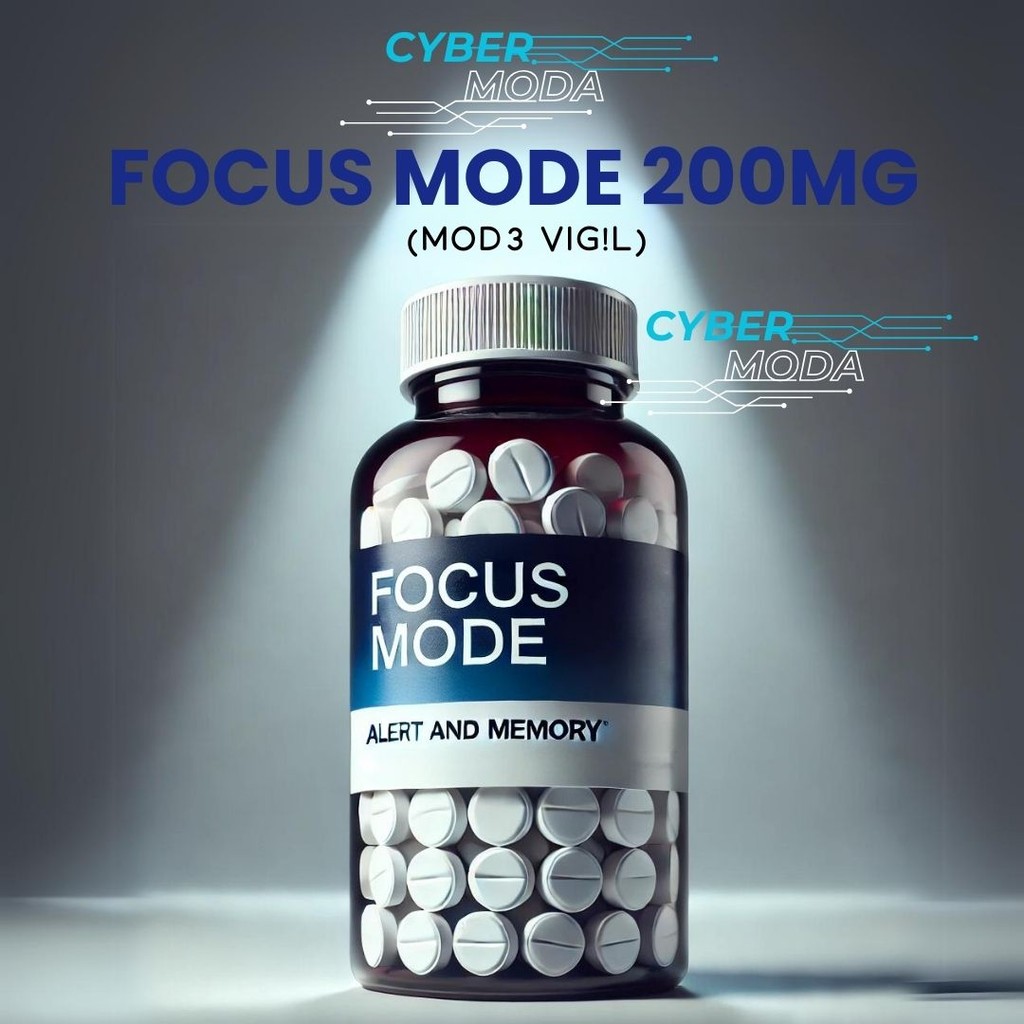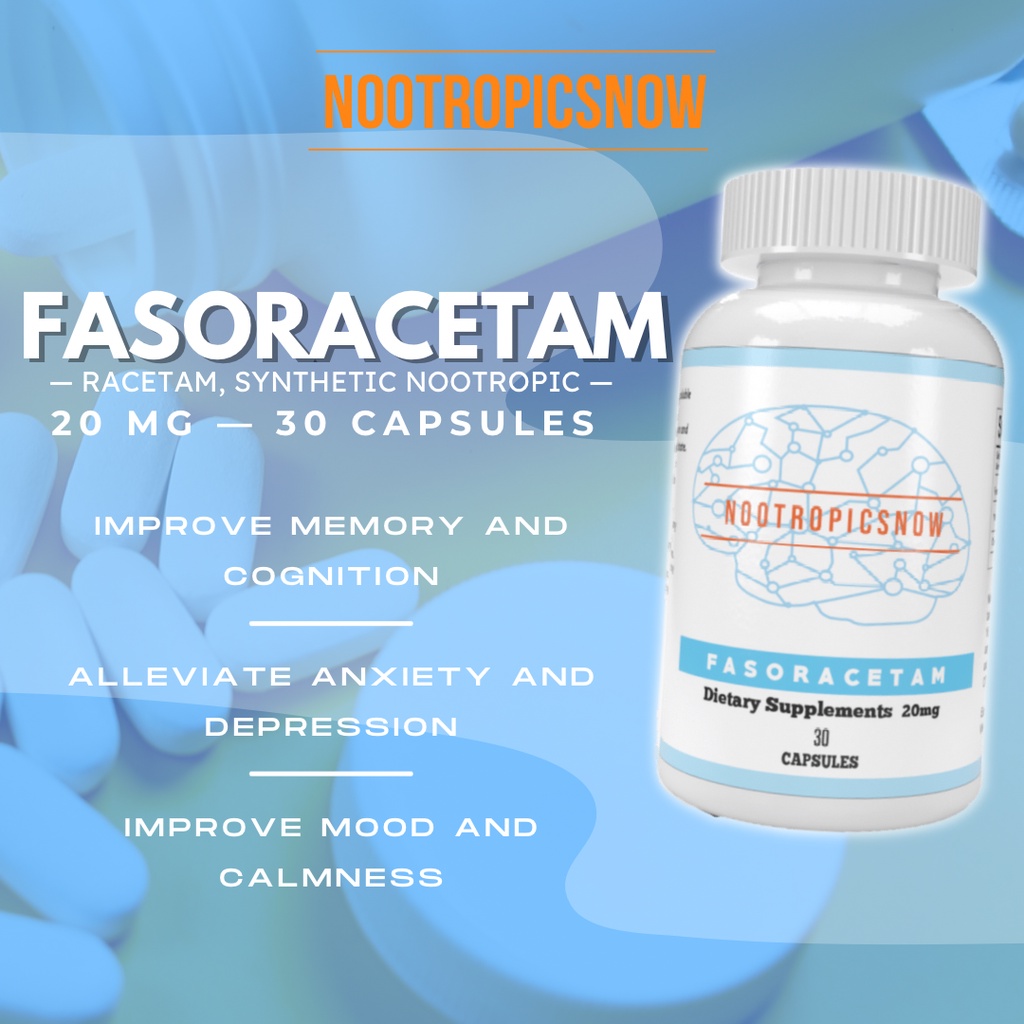Fasoracetam Review: Does It Work?

Fasoracetam Review: Exploring Benefits, Dosage, and Effects (2024)

Fasoracetam, a synthetic nootropic of the racetam family, has surged in popularity among individuals seeking cognitive enhancement. This review delves into fasoracetam, exploring its mechanisms, potential benefits, risks, and how it compares to other nootropics. We aim to provide a comprehensive overview to help you make informed decisions about its usage.
What is Fasoracetam?
Fasoracetam is a derivative of gamma-aminobutyric acid (GABA), though it doesn’t directly bind to GABA receptors. Originally developed by Nippon Shinyaku, a Japanese pharmaceutical company, fasoracetam was initially investigated for the treatment of Alzheimer’s disease. While clinical trials for Alzheimer’s were discontinued, research revealed its potential benefits for other cognitive and neurological conditions. This prompted renewed interest in the compound, solidifying its position in the nootropics community. Its impact on focus and motivation has made it a topic of much interest.
How Does Fasoracetam Work? Understanding the Mechanisms
Fasoracetam’s cognitive-enhancing effects are attributed to several mechanisms of action:
Cholinergic Activity: Fasoracetam enhances the release of acetylcholine, a neurotransmitter vital for memory, learning, and overall cognitive function. By increasing acetylcholine levels, fasoracetam can improve cognitive processes and information processing. This is one of its most well-established mechanisms.
Glutamate Receptor Modulation: Fasoracetam interacts with metabotropic glutamate receptors (mGluRs), specifically mGluR1 and mGluR5. These receptors play a crucial role in synaptic plasticity, the brain’s ability to adapt and form new connections. Fasoracetam helps regulate glutamate levels, preventing excitotoxicity (overstimulation of neurons) and promoting cognitive stability.
GABAergic Effects: Although it is a GABA derivative, fasoracetam doesn’t bind directly to GABA receptors. However, some studies suggest it can influence GABAergic neurotransmission, which plays a role in anxiety reduction and mood regulation. This mechanism contributes to its calming and mood-enhancing effects.
Choline Uptake Enhancement: Fasoracetam boosts choline uptake in the brain. Choline is a precursor to acetylcholine, which means an enhanced uptake can further improve cholinergic neurotransmission, resulting in further cognitive benefits.
Understanding these mechanisms provides a strong foundation for assessing its potential benefits and side effects.
Potential Benefits of Fasoracetam
Users report several benefits associated with fasoracetam use. However, it’s crucial to remember that research is still ongoing, and individual experiences can vary.
Improved Memory and Learning: Many users report enhanced memory recall, better learning abilities, and increased retention of information when using fasoracetam. This effect is likely due to its enhancement of cholinergic neurotransmission. The increased focus contributes to this too.
Enhanced Focus and Concentration: Fasoracetam can promote sustained focus and concentration, making it useful for tasks that require mental stamina and attention. Therefore, individuals struggling with staying on task may find it beneficial.
Reduced Anxiety and Improved Mood: Some individuals experience reduced anxiety, decreased feelings of depression, and an overall improved mood when using fasoracetam. These effects are thought to be related to its influence on GABAergic and glutamatergic neurotransmission.
Increased Motivation: A number of users report that fasoracetam increases motivation and drive, thus making it easier to initiate and complete tasks. Therefore, it can be valuable for combating procrastination and boosting productivity.
Potential ADHD Treatment: Preliminary research suggests that fasoracetam could be a potential treatment option for ADHD, particularly in individuals with genetic mutations affecting glutamate receptor function. More extensive research is needed to confirm this benefit. However, the initial results are promising.

View Product
Neuroprotective Properties: By regulating glutamate levels and promoting synaptic plasticity, fasoracetam may offer neuroprotective benefits, safeguarding brain cells from damage and cognitive decline. This aspect requires further investigation.
Fasoracetam Dosage: Finding the Right Amount
Dosage is an important factor to consider when using any nootropic, including fasoracetam. Optimal dosage can vary depending on individual factors like age, body weight, sensitivity, and desired effects. There is no one-size-fits-all approach.
Starting Dose: A common starting dose is between 10mg and 20mg taken one to two times per day. This low initial dose allows you to assess your tolerance and sensitivity to fasoracetam. This step is crucial for minimizing any potential adverse effects.
Typical Dosage Range: Most users report that a daily dosage of 20mg to 60mg, divided into two or three doses, is effective for cognitive enhancement. However, it’s essential to adjust the dosage based on your individual response. Incremental increases can help.
Administration: Fasoracetam is typically taken orally, either in powder form, dissolved in water or juice, or in capsule form. Some users prefer sublingual administration (placing the powder under the tongue) for faster absorption.
Cycling: Many nootropic users advocate for cycling fasoracetam to prevent tolerance buildup and maintain its effectiveness. A common cycle involves taking fasoracetam for a few weeks or months, followed by a break of equal duration.
Consultation: It’s always advisable to consult with a healthcare professional before starting any new supplement, including fasoracetam, especially if you have any underlying health conditions or are taking other medications.
| Dosage Type |
Recommended Dose |
Frequency |
Notes |
| ——————- |
—————- |
———– |
——————————————————————— |
| Starting Dose |
10mg – 20mg |
1-2x Daily |
Assess tolerance; monitor for side effects |
| Typical Dosage |
20mg – 60mg |
2-3x Daily |
Adjust based on individual response; avoid exceeding recommended dose |
| Administration Route |
Oral/Sublingual |
As Required |
Capsules, powder, or dissolved in liquid |
| Cycling |
Varies |
Varies |
Prevents tolerance; consult guidelines |
Potential Side Effects and Risks
While fasoracetam is generally considered safe, some individuals may experience side effects. It is important to be aware of these potential risks before using it.
Headaches: This is a commonly reported side effect with many racetams, including fasoracetam. Headaches can often be mitigated by ensuring adequate choline intake, as choline is a precursor to acetylcholine. Adding a choline source like Alpha GPC or CDP-Choline may help.

View Product
Gastrointestinal Issues: Some users report experiencing nausea, stomach discomfort, or diarrhea when taking fasoracetam. These side effects are usually mild and temporary, but can be unpleasant.
Fatigue: While fasoracetam is often used to enhance focus and motivation, paradoxically, some individuals experience fatigue or drowsiness as a side effect. Reducing the dosage or adjusting the timing of administration may help.
Anxiety or Irritability: In some cases, fasoracetam can trigger anxiety, nervousness, or irritability. These effects are more likely to occur in individuals who are already prone to anxiety. Lowering the dosage or discontinuing use may be necessary.
Tolerance: With prolonged use, tolerance to the effects of fasoracetam can develop. This means that higher doses are needed to achieve the same cognitive benefits. Cycling fasoracetam can help to prevent or minimize tolerance.
Lack of Long-Term Studies: Due to its relatively recent emergence in the nootropics community, there is a lack of long-term studies on the safety and efficacy of fasoracetam. It’s essential to be aware of this limitation and use it with caution.
Drug Interactions: Fasoracetam may interact with certain medications, particularly those that affect neurotransmitter systems. It’s crucial to consult with a healthcare professional if you are taking any medications before using fasoracetam.
Stacking Fasoracetam: Combining with Other Nootropics
Many users combine fasoracetam with other nootropics to enhance its cognitive effects or to mitigate potential side effects. This practice is known as stacking.
Choline Sources: As mentioned earlier, stacking fasoracetam with a choline source like Alpha GPC or CDP-Choline can help to prevent headaches and improve cholinergic neurotransmission. This is a very common and beneficial stack.

View Product
Other Racetams: Some users stack fasoracetam with other racetams, such as piracetam or aniracetam, to create a synergistic effect. However, it’s essential to start with low doses and monitor your response carefully.
L-Theanine: L-Theanine, an amino acid found in green tea, can help to reduce anxiety and promote relaxation. Stacking fasoracetam with L-Theanine may help to balance out any stimulating effects and promote a more balanced cognitive state.

View Product
Caffeine: While fasoracetam and caffeine can provide a synergistic boost in focus and energy, it’s important to use this combination with caution, as it can increase the risk of anxiety and jitteriness. Monitor your caffeine intake carefully.
Noopept: This combination can enhance focus and memory, but start with low doses to assess synergy.
Bacopa Monnieri: Combining this with fasoracetam may create a synergistic effect that improves overall cognitive health.

View Product
| Stack Combination |
Purpose |
Considerations |
| ——————– |
————————————————————– |
————————————————————————— |
| Fasoracetam + Alpha GPC |
Prevent headaches, enhance cholinergic activity |
Monitor choline dosage |
| Fasoracetam + L-Theanine |
Reduce anxiety, promote relaxation |
Adjust L-Theanine dose to balance stimulation |
| Fasoracetam + Caffeine |
Enhance focus and energy |
Use with caution to avoid anxiety; monitor caffeine intake |
| Fasoracetam + Noopept |
Focus and Memory |
Start with low dose to assess synergy |
| Fasoracetam + Bacopa |
Improve overall cognitive health |
Monitor cognitive responses; start with low dose if necessary. |
Fasoracetam vs. Other Racetams: A Comparison
Fasoracetam is part of the racetam family, a group of synthetic nootropics that share a similar chemical structure and mechanisms of action. Some other popular racetams include piracetam, aniracetam, oxiracetam, and pramiracetam. Each racetam has unique properties and effects.
Piracetam: The first racetam discovered, piracetam is known for its mild cognitive-enhancing effects and is often used to improve memory and learning. However, it tends to have subtle effects.
Aniracetam: Aniracetam is more potent than piracetam and is known for its anxiolytic (anxiety-reducing) and mood-enhancing effects.
Oxiracetam: Oxiracetam is known for its stimulating effects and is often used to enhance focus and concentration.
Pramiracetam: Pramiracetam is one of the most potent racetams and is known for its powerful cognitive-enhancing effects, particularly on memory and recall.
Fasoracetam: In comparison to other racetams, fasoracetam is often described as having a more balanced effect profile, with a combination of cognitive-enhancing, anxiolytic, and mood-enhancing properties. It particularly stands out for its potential to improve motivation.

View Product
| Racetam |
Primary Effects |
Potency |
Notes |
| ————- |
—————————————————————————- |
———- |
———————————————————————– |
| Piracetam |
Memory improvement, learning enhancement |
Mild |
First racetam discovered |
| Aniracetam |
Anxiety reduction, mood enhancement |
Moderate |
More potent than piracetam |
| Oxiracetam |
Stimulation, focus enhancement |
Moderate |
Known for its stimulating effects |
| Pramiracetam |
Powerful cognitive enhancement, memory and recall improvement |
High |
One of the most potent racetams |
| Fasoracetam |
Balanced effect profile, cognitive enhancement, anxiolytic, mood enhancement |
Moderate |
Potential for ADHD treatment; may have balanced effect profile |
Legality and Availability of Fasoracetam (2024)
The legal status of fasoracetam varies depending on the country and jurisdiction.
United States: In the United States, fasoracetam is not approved by the FDA as a dietary supplement or medication. However, it is legal to purchase and possess fasoracetam for research purposes. Therefore, it is often sold as a research chemical.
Other Countries: The legal status of fasoracetam in other countries can vary. It’s important to check the specific regulations in your country before purchasing or using it.
Availability: Fasoracetam is available for purchase from various online vendors, typically as a powder or in capsule form. Ensure you buy from a reputable source that provides third-party testing and quality assurance.
Conclusion: Is Fasoracetam Right for You?
Fasoracetam is a promising nootropic with the potential to enhance cognitive function, reduce anxiety, and improve mood. While research is ongoing, anecdotal evidence and preliminary studies suggest that it can be a valuable tool for individuals seeking cognitive enhancement.
Weigh the Benefits and Risks: Before using fasoracetam, carefully consider the potential benefits and risks. Understand the mechanisms of action, potential side effects, and legal status in your jurisdiction.
Start Low and Go Slow: Begin with a low dose and gradually increase it as needed, monitoring your response carefully.
Consider Stacking: If desired, consider stacking fasoracetam with other nootropics, such as choline sources or L-Theanine, to enhance its effects or mitigate potential side effects.
Cycle Your Usage: Cycle your usage to prevent tolerance buildup and maintain its effectiveness.
Consult with a Healthcare Professional: If you have any underlying health conditions or are taking other medications, consult with a healthcare professional before using fasoracetam.
Ultimately, the decision to use fasoracetam is a personal one. By being informed and cautious, you can make an educated choice about whether it is the right nootropic for your needs and goals.
Disclaimer: This review is for informational purposes only and does not constitute medical advice. Consult with a qualified healthcare professional before using any nootropic or dietary supplement.
Fasoracetam Review: Unveiling the Cognitive Enhancer
Fasoracetam, a nootropic substance belonging to the racetam family, has been making waves in the cognitive enhancement community. It’s touted for its potential benefits on memory, focus, and overall cognitive function. However, like any substance affecting the brain, a thorough understanding is crucial before considering its use. This comprehensive fasoracetam review will delve into its mechanisms of action, potential benefits, side effects, dosage guidelines, and user experiences. Furthermore, this review aims to provide a balanced perspective, considering both the promising aspects and the potential risks.
What is Fasoracetam?
Fasoracetam, chemically known as 5-[(piperidin-1-yl)carbonyl]-2-pyrrolidinone, is a synthetic nootropic initially developed in the 1990s by Nippon Shinyaku, a Japanese pharmaceutical company. It was initially intended as a potential treatment for Alzheimer’s disease. Although it didn’t achieve success in clinical trials for dementia, research revealed other potential cognitive benefits. Consequently, it is now being explored for ADHD and other neurological conditions. Crucially, fasoracetam is not approved by the FDA for any specific medical use, and its use is primarily for research and experimental purposes. This classification is important to acknowledge before diving into the potential benefits.
How Fasoracetam Works: Mechanism of Action
Understanding how fasoracetam works involves exploring its complex interactions within the brain. Several mechanisms are believed to contribute to its cognitive-enhancing effects.
Cholinergic System Enhancement: Fasoracetam primarily affects the cholinergic system by increasing acetylcholine levels. Acetylcholine is a neurotransmitter vital for learning, memory, and overall cognitive function. By enhancing cholinergic activity, fasoracetam could improve these cognitive processes, enabling improved recall and better cognitive processing.
Glutamate Receptor Modulation: Another crucial aspect of fasoracetam’s action is its influence on glutamate receptors. Glutamate is the primary excitatory neurotransmitter in the brain, playing a crucial role in synaptic plasticity and learning. Fasoracetam is thought to modulate metabotropic glutamate receptors (mGluRs), specifically mGluR5. This modulation may help restore the balance of glutamate activity, which is vital for optimal cognitive function. Imbalances in glutamate levels have been implicated in a variety of neurological and psychiatric disorders, and fasoracetam’s modulation may have therapeutic potential.
GABAergic System Influence: Moreover, fasoracetam affects the GABAergic system, increasing GABA receptor activity. GABA (gamma-aminobutyric acid) is the brain’s primary inhibitory neurotransmitter, responsible for reducing neuronal excitability and promoting relaxation. By enhancing GABAergic neurotransmission, fasoracetam can potentially exert anxiolytic (anti-anxiety) and calming effects. Many user reports highlight the anxiolytic properties of the nootropic.
Upregulation of GABA-B Receptors: Further studies suggest that fasoracetam upregulates GABA-B receptors. This upregulation is thought to contribute to its antidepressant and anxiolytic effects. Increasing the number of available GABA-B receptors improves the efficacy of GABA signaling, leading to a reduction in anxiety and improved mood regulation.
Potential Cognitive Benefits
The hypothesized mechanisms of action lead to several potential cognitive benefits, although it’s important to remember that human research remains limited.
Improved Memory and Learning: Due to its effects on the cholinergic system, fasoracetam is frequently reported to enhance memory and learning capabilities. Users often report improved recall and better retention of information, especially during study or work sessions.

View Product
Enhanced Focus and Concentration: Users report that fasoracetam can increase focus and concentration, helping them to stay on task for extended periods. This can be especially beneficial for individuals with attention deficits or those engaged in demanding cognitive tasks.
Reduced Anxiety: The modulation of the GABAergic system suggests that fasoracetam might possess anxiolytic properties, reducing feelings of anxiety and promoting relaxation. Many users report a noticeable decrease in anxiety levels when taking fasoracetam.

View Product
Mood Enhancement: Some users also report a positive effect on mood, experiencing a greater sense of well-being and a reduction in symptoms of depression. This mood-boosting effect could be linked to the modulation of GABA and other neurotransmitter systems.
Increased Motivation: Several user accounts suggest that fasoracetam increases motivation and drive. This effect might be advantageous for individuals who struggle with procrastination or lack of motivation to complete tasks.
Fasoracetam Dosage: Finding the Right Amount
Determining the correct fasoracetam dosage depends on various individual factors, including body weight, sensitivity to the drug, and desired effects. Since it is not FDA approved, there are no official guidelines, so users must proceed with caution. However, based on existing research and user reports, a typical dosage range is as follows:
Starting Dose: Begin with a low dose of around 10-15mg taken twice daily.
Typical Dose: The dosage can be gradually increased to 30-50mg taken twice daily if needed.
Maximum Dose: Some users take up to 100mg per day, but this should be approached with caution and under careful monitoring.
Administration: Fasoracetam is usually administered orally. Some users take it sublingually (under the tongue) for faster absorption.
Cycling: Cycling fasoracetam (taking it for a period followed by a break) is frequently recommended to prevent tolerance build-up. A typical cycle is 4-8 weeks on, followed by 2-4 weeks off.
It is highly advisable to start with the lowest effective dose and gradually increase it until the desired effects are achieved while minimizing potential side effects. Consulting with a healthcare professional before starting fasoracetam is strongly recommended.
Potential Side Effects and Risks
While fasoracetam is generally considered to be well-tolerated, some individuals may experience side effects. It is vital to be aware of these potential risks before using fasoracetam.
Headaches: This is one of the most commonly reported side effects, particularly when starting fasoracetam. It can often be mitigated by choline supplementation.
Gastrointestinal Issues: Some users report experiencing nausea, stomach upset, or diarrhea.
Fatigue: Paradoxically, despite its cognitive-enhancing effects, fasoracetam can cause fatigue in some individuals.
Anxiety: While many users experience reduced anxiety, some might experience increased anxiety, especially at higher doses.
Irritability: Some users report feeling irritable or easily agitated.
Cognitive Overstimulation: Cognitive overstimulation can manifest as difficulty focusing, mental restlessness, and an inability to relax.
Insomnia: Although less common, some users have reported difficulty sleeping when taking fasoracetam.
Tolerance: Over time, the effects of fasoracetam may diminish as the body develops tolerance. Cycling the drug can help mitigate this.
Limited Human Research: Because research is limited, the long-term effects of fasoracetam are not fully understood.
Drug Interactions: Fasoracetam may interact with other medications, particularly those that affect neurotransmitter systems. It is important to consult with a healthcare professional before using it, especially if you are taking other medications.
User Experiences and Anecdotal Reports
User experiences with fasoracetam vary significantly. Many report positive effects, while others experience little to no benefit, or even adverse effects. Online forums and communities dedicated to nootropics provide a wealth of anecdotal data.
Positive Experiences: Common themes among positive reports include improved focus, enhanced memory, reduced anxiety, and increased motivation. Some users also report an increased sense of well-being and improved mood.
Negative Experiences: Users who report negative experiences frequently mention headaches, fatigue, anxiety, and irritability. Some users also find that fasoracetam has no noticeable effect on them.
Importance of Individual Response: Individual response to fasoracetam appears to vary greatly. Factors such as genetics, lifestyle, and underlying health conditions can all influence its effects.
Stacking: Many users experiment with stacking fasoracetam with other nootropics. Common stacks include combining it with choline sources (to mitigate headaches), other racetams, or adaptogens like Rhodiola Rosea.

View Product
Is Fasoracetam Legal?
The legal status of fasoracetam varies by country.
United States: Fasoracetam is not approved by the FDA for use as a drug or dietary supplement. It is legal to purchase and possess for research purposes, but it cannot be sold as a medication or supplement.
European Union: The legal status varies between member states. Some countries allow the sale of fasoracetam as a research chemical, while others have stricter regulations.
Other Countries: Laws regarding the sale and use of fasoracetam differ worldwide. It is vital to check the legal status in your country before purchasing or using it.
Where to Buy Fasoracetam
Fasoracetam is commonly available online from vendors that specialize in research chemicals. When purchasing fasoracetam, it is vital to choose a reputable source to ensure product quality and purity.
Research Chemical Vendors: These vendors typically sell fasoracetam in powder or capsule form.
Nootropic Retailers: Some nootropic retailers offer fasoracetam, often in combination with other cognitive enhancers.
Third-Party Testing: Look for vendors that provide third-party testing results to verify the purity and potency of their products.
Reviews: Check customer reviews and ratings to assess the vendor’s reliability and product quality.
The Importance of Choline Supplementation
Choline is an essential nutrient that plays a vital role in brain health and cognitive function. It is a precursor to acetylcholine, the neurotransmitter that fasoracetam primarily affects. Many users recommend choline supplementation when taking fasoracetam to enhance its effects and mitigate potential side effects like headaches.

View Product
Choline Sources: Common choline sources include Alpha-GPC, CDP-Choline (Citicoline), and Choline Bitartrate.
Headache Prevention: Choline supplementation can help prevent headaches, a common side effect of fasoracetam, by ensuring adequate acetylcholine levels.
Synergistic Effects: Some users report that choline enhances the cognitive benefits of fasoracetam, leading to improved memory, focus, and overall cognitive function.
Scientific Studies and Research
Although anecdotal evidence is abundant, it’s essential to consider the scientific research available on fasoracetam. While more research is needed, existing studies offer valuable insights.
ADHD Studies: One notable study investigated the use of fasoracetam in adolescents with ADHD who had specific genetic mutations in glutamate receptor genes. The study found that fasoracetam significantly reduced ADHD symptoms in these individuals.
Animal Studies: Animal studies have shown that fasoracetam can improve memory and learning, reduce anxiety, and protect against cognitive decline.
Limited Human Trials: There are relatively few human trials on fasoracetam, and most of them are small-scale studies. More research is needed to confirm its effectiveness and safety in humans.
Conclusion: A Balanced Perspective
Fasoracetam is a nootropic substance with promising potential cognitive benefits. Its mechanisms of action, primarily involving the cholinergic, glutamatergic, and GABAergic systems, suggest that it may enhance memory, focus, reduce anxiety, and improve mood. However, it is crucial to approach fasoracetam with caution and awareness.
Limited human research means that the long-term effects and safety profile are not fully understood. Individual responses vary significantly, and some users may experience side effects. It’s vital to start with a low dose, monitor your response closely, and consider choline supplementation.
Furthermore, remember that fasoracetam is not a magic bullet for cognitive enhancement. A healthy lifestyle, including a balanced diet, regular exercise, and adequate sleep, is essential for optimal brain health. Nootropics like fasoracetam should be viewed as a potential supplement to a healthy lifestyle, not a replacement.
Ultimately, whether or not to use fasoracetam is a personal decision. It is vital to carefully weigh the potential benefits and risks, consult with a healthcare professional, and make an informed choice based on your individual needs and circumstances. The future of fasoracetam looks promising as research continues to unfold.

View Product-Nootropic-Brain-Booster-Supplement-Memory-Anxiety-Mood-i.202321183.7553863660)












